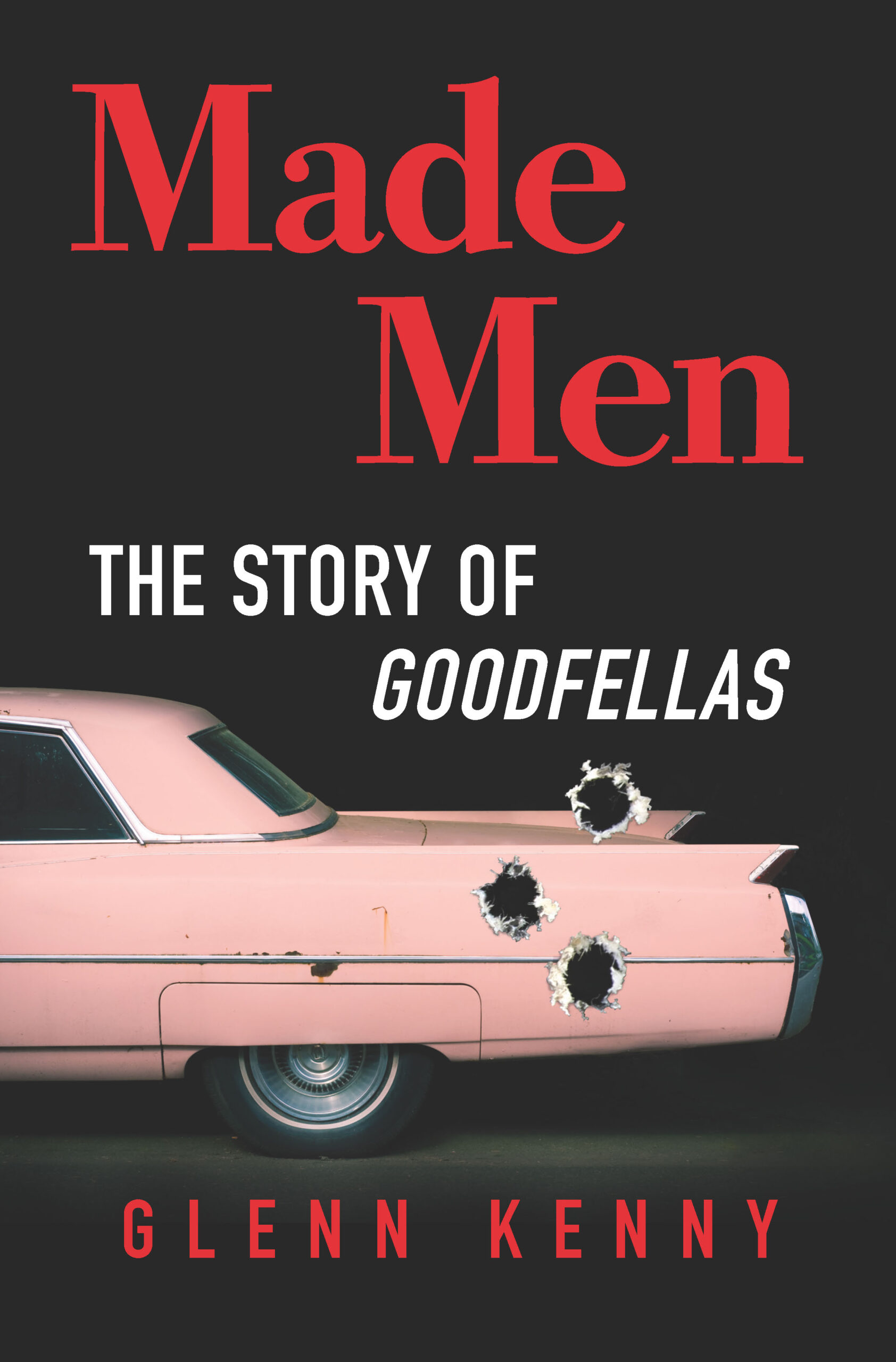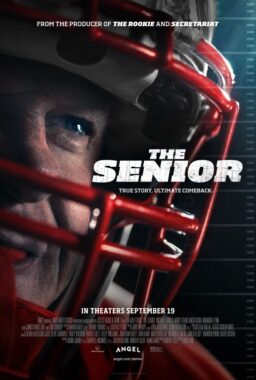We are honored to present an excerpt from Glenn Kenny’s Made Men: The Story of Goodfellas, available in stores and online today, September 15th. Get your copy here. Below we have embedded the CBS Saturday morning segment on the book featuring Kenny and “Goodfellas” co-screenwriter Nicholas Pileggi.
“Raging Bull was my first feature!” Thelma Schoonmaker told Scorsese biographer Mary Pat Kelly. “When I came to work with Marty, I said, ‘You know, I’ve never cut a feature before.’ And he said, ‘Don’t worry, we’ll do it together, it’ll be okay.’ It was my assistant, Sonya Polonsky, who taught me how to organize a room for a theatrical film. Marty had called me several times for other movies but I hadn’t gotten into the union when I was younger. Now they said I would have to work as an assistant for eight years before I could be an editor. I said no. But on Raging Bull, through Irwin Winkler, [consulting with] lawyers and standby editors […] I got into the union. We were working all night. I’m not a night person. I’ve never adjusted to working all night. But in that solitude we found an incredible ability to concentrate.”
That concentration became crucial to their work process, and they worked to make sure they could always achieve it. As such, the editing room is a closed shop, so to speak. David Leonard, who was part of the Scorsese editorial department from Last Temptation through Goodfellas, recalls, “Thelma did everything. Yeah. I mean, there wasn’t a lot of mentoring. That wasn’t the way they worked. The door was shut. There wasn’t a lot of ‘what’d you think of this, look at this.’ There was a whole editing lineage that went back to Dede Allen, who was very conscious about training assistants to the edit. So she always had an assistant who stood by her, and she would edit out loud and talk. Mostly Thelma didn’t really at that time cut until Marty was in the room. Dailies would come in, and there was a very elaborate system of organizing the footage so that when Marty came in there were takes set up in reels, because it was film and he could see his preferences from the notes of dailies back-to-back-to-back. So there were very elaborate assemblies but not really cut.
“What she would do is she would run through the dailies and she’d mark them up with grease pencils, ins and outs, give it to us. We would have to then pull the sections out and rebuild them into new reels and there were two logbooks. There was the log of the main roll of dailies and then there was a select log so you knew where the trims went. So it was very organizationally intensive for the assistants.”
One hallmark of Schoonmaker’s editing philosophy is that dynamic discrete moments matter more than issues of continuity. “Performance, performance, performance,” Leonard recalls as her motto. In a 2014 interview in Film Comment with the critic Nick Pinkerton, Schoonmaker elaborates. “I don’t understand why people get so hung up on these issues, because if you look at films throughout history, you will see enormous continuity errors everywhere, particularly when you’re talking about the [practically square] Academy aspect ratio where you see more in the frame. Even in The Red Shoes, a film that nobody ever has complaints about, there are enormous continuity bumps, and it doesn’t matter. You know why? Because you’re being carried along by the power of the film. So throughout our history of improvisational cutting, we have decided to go with the performance, or in this case particularly with the humor of a line, as opposed to trying to make sure a coffee cup is in the right place.”
Schoonmaker then cites a pertinent example: “I remember that when I was nominated for an Academy Award for Goodfellas and we lost to Dances with Wolves for editing, the editor of that movie said to me: ‘Why did you make that bad continuity cut?’ And I said, ‘Which cut? Which continuity error? We have tons of them.’ He was talking about a scene with Paul Sorvino and another actor who was an amateur, but wonderful, though he didn’t know about matching. It was much more important for us to get this beautiful performance by this untrained actor than to worry about where the cigar is in Paul Sorvino’s hand. One doesn’t want to do that, one would hope not to do that, but if the choice comes between a beautiful, clean line and a laugh, we would always go for the laugh.”
Here Schoonmaker’s recollection is not entirely precise: it’s not the cigar in the hand, which stays in continuity, but the cigar in the mouth. It’s the scene with Tony Darrow as the Bamboo Lounge owner begging Paulie to rein in Tommy, or take a business interest in the restaurant. It occurs about twenty-six minutes into the movie. There’s a behind-the-head shot of Paulie, with the cigar is in his mouth, in the cutaway to a reverse angle there’s no cigar in his mouth. Like so: “What the fuck you think I’m talking about, Paulie, please, come on.” Paulie says, “It’s not even fair,” then cut, cigar is out of his mouth, and he finishes saying, “No.” Yes, it is a “bad” cut, and I never noticed it until I read that interview and looked it up.
David Leonard is a professional film editor to this day, and he says, “Yeah, I never got over that cut. As I watched the movie again, I was thinking I couldn’t remember what was so good about it or what the other takes were of Paulie in there that they had to have that moment.”
The moments of feedback or active participation he was allowed are still special to Leonard. “During Last Temptation there’s that very long slow-motion shot of Jesus walking with the cross. It’s a very long shot. At one point I remember Thelma came out when we were eating dinner late and said, ‘Do you think that shot’s too long?’ And it was one of the few times I can remember that. For me as an assistant where I got Marty time was the mixing of Goodfellas, the scratch mixing, because especially at that point [Schoonmaker’s husband] Michael Powell wasn’t well”—the director, in his eighties, had cancer—“and Thelma was going home early. So I would generally go do a scratch mix with the mixer and then Marty would come and tweak it. So that was where I sort of had some one-on-one time with Marty. I remember once after a screening I went up to do something on the ninth floor and Marty was like, ‘Sounded great, David.’ There wasn’t a lot of that. Don’t get me wrong. He’s warm as shit. He’s great.”
At one point Scorsese’s need to stay in the editing room uninterrupted for as long as possible became such that he had a soundproof phone booth installed in the room, so he could receive or make calls privately without leaving. As they were constructing it, Scorsese remarked to Leonard that it was like the isolation booth on the 1950s television quiz show The $64,000 Question, so Leonard rigged a device that would play that show’s “question time” theme music whenever Scorsese closed the door. Scorsese got a huge kick out of it. The director’s moodiness waxed and waned: “It depends whether he’s not happy with what he did that day on set and it’s three months later, or whether his agent said this person’s not going to do this. And I remember Thelma would sort of say he never knows if they’re going to let him make another movie.” He was past the point of, as rumor had it, destroying editing rooms à la Charles Foster Kane raging in his soon-to-be-ex-wife’s bedroom at the end of Citizen Kane. But he could still be volatile. “If you walked in the editing room without warning, Marty would jump up and say, ‘How the FUCK am I supposed to get any work done,’ or some such thing.”
One of Leonard’s responsibilities was rounding up sources for the song soundtrack. “I always think about this. He handed me a list of music to have prepared for the cutting room and, like, ninety percent of what’s in the movie was on the list. And this was while he was shooting. It was, like, you know, have this stuff ready. That was always an amazing thing to me, all that stuff, and then it was in his shooting script. You know, ‘Jump into the Fire’ crosses with ‘Magic Bus.’
“And there weren’t many CDs around in 1989. So we had to go find stuff and at that point you would transfer a 45 or a cut from vinyl onto a quarter-inch tape so you could constantly reprint magnetic stock of it, but we would have to go find this stuff and fortunately we were upstairs from Colony Records. So you could run downstairs and for fifty dollars get a copy of a Dean Martin record with ‘Ain’t That a Kick in the Head’ on it.”
Schoonmaker’s husband, Michael Powell, died at age eighty-four in February of 1990, while editing of Goodfellas was still underway. “So Thelma disappeared,” Leonard recalls. “She had to go to England. She was away for about two, three weeks. Michael’s devotion to Marty was wonderful. After a screening of Last Temptation Michael got up. There were death threats against Marty over the movie at that point and Mike was, like, ‘Marty, I’ll take a bullet for you.’ I got to have lunch with him a lot because Barbara had an assistant who had this dog, Elvis, a basset hound, and Thelma would say, ‘Why don’t you take Elvis to go see Michael,’ because they lived around the corner on 51st and 8th. So I would walk Elvis over, and then Mike would show up and Mike would have a plate and a teacup set up for me. And he would run and, like, jump on the carpet to play with Elvis. I’m thinking, ‘Great, Michael’s going to fall and break a hip. I’m going to get Michael Powell killed.’ He hadn’t a care. He would be playing with the dog.
“He dictated his autobiography, I think both volumes, because he had macular degeneration. So he couldn’t read. I mean, that’s the thing about Thelma. She would spend all day with that nut in the cutting room, and she’d go home and she would type out what Michael had dictated, and then she would read it back into a recorder so he could listen to it and edit it and keep going. That’s Thelma.”
I had asked Schoonmaker about sitting for an interview when I saw her in the summer of 2019, and she seemed willing. But after finishing work on The Irishman, and working with Scorsese on its promotion, she went to England, to once again perform an act of devotion to Michael Powell: she is editing his diaries.
Glenn Kenny © 2020 by Glenn Kenny, used with permission from Hanover Square Press/HarperCollins.











